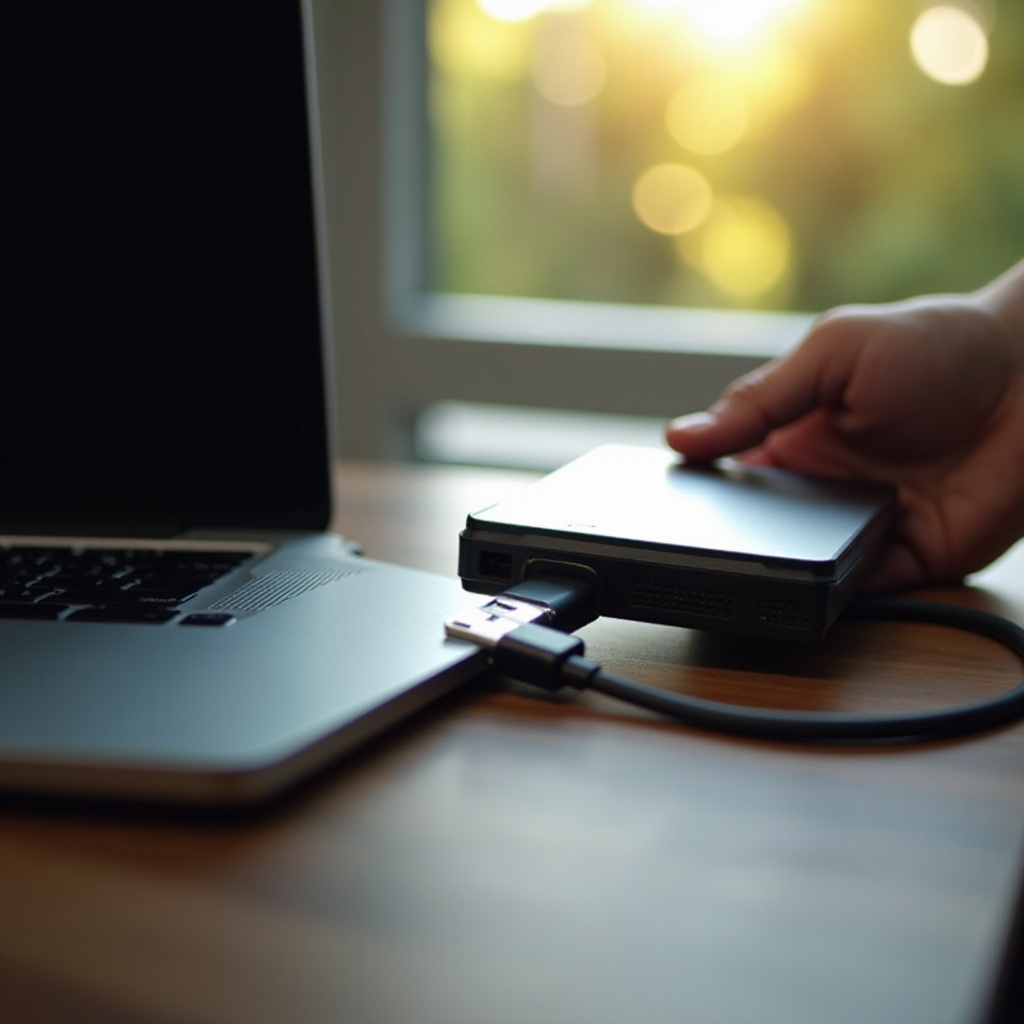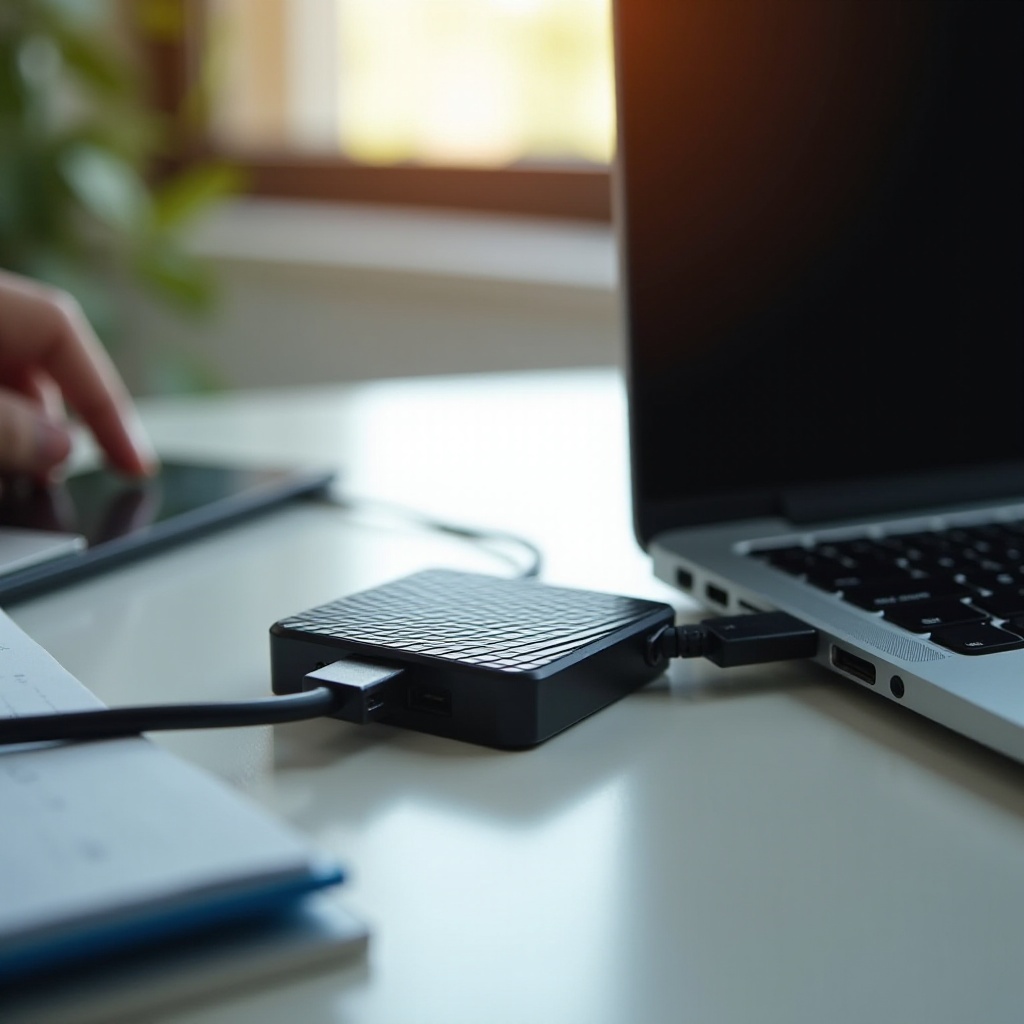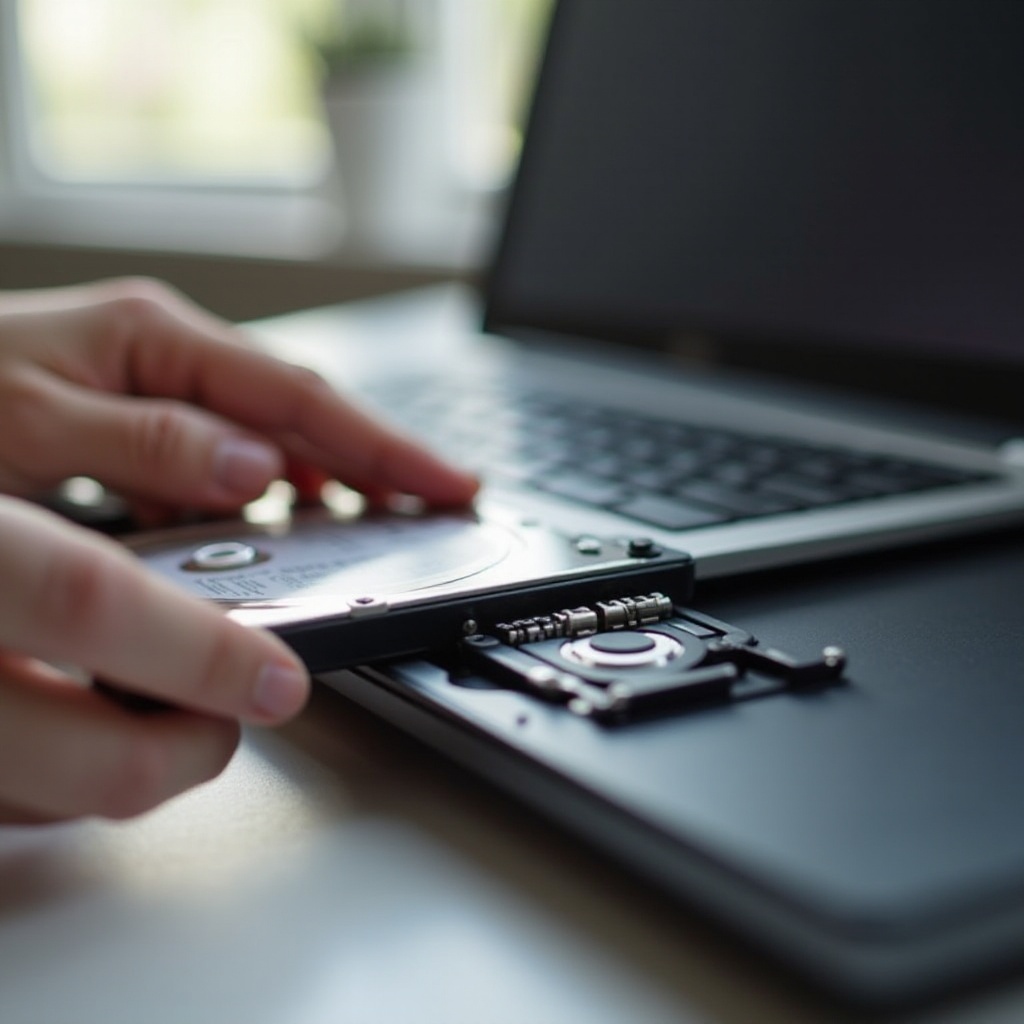Introduction
Connecting a hard disk drive (HDD) to your laptop is a straightforward process that can significantly boost your storage capacity and overall performance. Whether you require additional space for personal files or need a faster drive for professional tasks, properly connecting an HDD is essential. This guide will walk you through the steps of connecting both external and internal HDDs, covering preparation, execution, and troubleshooting tips.

Understanding HDDs: Types and Compatibility
Types of HDDs: External vs. Internal
When upgrading your laptop’s storage, understanding the two main types of HDDs—external and internal—is crucial. External HDDs are designed for portability and connect via USB, making them ideal for additional storage without opening your device. Internal HDDs require installation inside the laptop, providing speed and storage improvements. Knowing which type aligns with your needs is the first step towards expanding your laptop’s capabilities.
Compatibility Considerations
Before connecting an HDD, ensure compatibility with your laptop. Check if your operating system supports the HDD type you’re using. For external HDDs, verify that your laptop has the necessary USB ports, like USB 3.0 or USB-C. When using internal HDDs, confirm there’s an available SATA interface in your laptop. This groundwork ensures the HDD can communicate effectively with your system, ensuring a seamless connection.
Tools and Preparation Checklist
Essential Tools for the Task
Before starting, gather these tools to streamline the process:
- A Philips screwdriver for securing components
- An external HDD enclosure or SATA to USB adapter (for external connections)
- Backup software for data protection
- An anti-static wristband to protect components
Being equipped with the right tools prevents delays and facilitates a smoother installation process.
Preparing Your Laptop for Connection
Ensure your laptop is completely powered off and unplugged. If possible, remove the battery for safety. Place your laptop on a clean, anti-static surface to prevent any damage. These preparatory steps protect your device during the installation process, whether you’re connecting an external or internal HDD.
Connecting an External HDD to Your Laptop
Physical Connection Steps
- Connect the USB cable of the external HDD to the appropriate port on your laptop.
- Wait for your laptop to recognize the new hardware and install necessary drivers.
- Confirm the HDD appears as a new drive in your file manager.
Connecting an external HDD is a simple plug-and-play procedure that enhances your storage capabilities with minimal effort.
Initial Configuration and Setup
After connecting, configure your external HDD:
- Confirm the drive appears in your file manager.
- If new, format the drive using a compatible file system, such as NTFS for Windows.
- Assign a drive letter and customize settings according to your needs.
These steps ensure your external HDD is ready for use, offering expanded storage without invasive installation.

Upgrading or Replacing an Internal HDD
Opening Your Laptop Safely
For those opting to upgrade internally, here’s how to begin:
- Remove the screws holding the laptop case using a screwdriver.
- Gently open the access panel without forcing it open.
- Locate the existing HDD, normally secured with bolts or a connector latch.
Taking these steps carefully prevents damage to your laptop and provides easy access to the HDD bay.
Installing the New HDD
Proceed with the installation:
- Detach and remove the existing HDD carefully.
- Position the new HDD in the slot, reconnecting it as the former one.
- Secure the new HDD with screws and ensure all connections are tight.
Replacing the internal HDD not only enhances storage but potentially improves overall performance with modern HDD technologies.
Configuring BIOS Settings
Once installed:
- Power up the laptop and enter the BIOS/UEFI menu (usually by pressing F2 during boot).
- Verify that the BIOS recognizes the new HDD.
- Adjust the boot order if necessary to prioritize the appropriate drive.
Exiting the BIOS confirms successful detection, allowing you to proceed with operating system configuration and additional settings.
Troubleshooting Common HDD Connection Issues
HDD Not Being Recognized
If your HDD is unrecognized:
- Re-check all physical connections.
- Consider updating drivers in your operating system.
- Check the HDD on a different device to rule out faulty hardware.
Addressing these areas often resolves recognition issues swiftly, allowing for continued use.
Solutions for Formatting Errors
For formatting issues:
- Use disk management tools to adjust partitions.
- Utilize error-checking software to identify and fix problems.
- Try a different file system if initial attempts fail.
These solutions ensure your HDD is correctly formatted and functioning as intended.
Optimizing and Utilizing Your HDD
Regular Maintenance Tips
To keep your HDD running smoothly:
- Regularly defragment the drive.
- Keep firmware updated.
- Use backup scheduling to manage storage effectively.
Routine maintenance extends the lifespan and improves reliability of your HDD storage solutions.
Using Software for Performance Enhancement
Enhance HDD performance with specialized software:
- Apply applications that optimize read/write speeds.
- Monitor drive health with dedicated diagnostic tools.
By using these tools, you can ensure optimal performance and longevity of your HDD.

Conclusion
Connecting an HDD to a laptop can expand your storage and improve performance when done correctly. Whether installing an external HDD for straightforward expansion or an internal upgrade for more permanent enhancement, these guides ensure an efficient and cohesive experience. Keep maintenance in mind to maximize the lifespan and reliability of your newly connected drives.
Frequently Asked Questions
Can I connect multiple HDDs to my laptop?
Yes, you can connect multiple external HDDs using USB ports. Internal connections depend on available bays.
How do I know if my laptop’s HDD is failing?
Signs include frequent errors, unusual noises, and slowed performance. Use diagnostic software for early detection.
Is it possible to speed up an external HDD’s performance?
Yes, using USB 3.0 or USB-C, defragmenting, and optimization software can improve speed.
